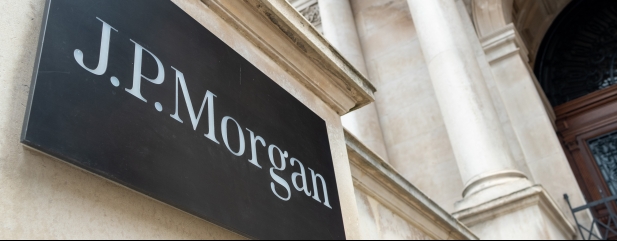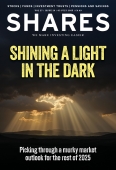Archived article
Please note that tax, investment, pension and ISA rules can change and the information and any views contained in this article may now be inaccurate.
Mystery ‘whale’ seeds JPMorgan’s first actively managed high yield bond ETF

At a time when credit spreads are historically tight across the spectrum of duration and quality, it is noteworthy that JPMorgan Asset Management announced the launch of its first actively-managed high-yield bond ETF (exchange traded fund).
High-yield bonds, sometimes referred to as ‘junk bonds’, are usually issued by highly-indebted companies with poor balance sheets, which means they are more financially vulnerable when the economy turns down.
The new fund is set to launch with $2 billion of assets after a ‘mystery’ backer provided the seed money, putting the fund in the top 50 of actively managed bond funds in just a few days.
The fund’s size means it can start life close to fully invested and is able to attract clients who might otherwise have restrictions on the percentage of any fund they can hold.
Finally, as any observer of the asset management industry will attest to, scale tends to beget even greater scale, which is important.
Bloomberg Intelligence senior ETF analyst Eric Balchunas told news reporter Katie Greifeld, ‘Assets are marketing, and if you can get an anchor tenant like that in there, you’re already profitable, by far.’
When asked why the investment firm decided to launch in the high-yield space, chief executive George Gatch pointed to ‘finite’ opportunities in private markets.
‘There’s a lot of money and investors chasing finite opportunities in the private credit market,’ Gatch explained, adding, ‘You also have liquidity trade-offs.’
‘You take those two things in combination and on a marginal basis, I would put my marginal dollar in public high-yield rather than private credit.’
For context, high-yield credit spreads have tightened from 4.6% post ‘Liberation Day’ to around 3%, one of the tightest levels since the eve of the financial crisis in 2007.
Nevertheless, JPMorgan believes yields are attractive compared to equites while also noting that default rates remain low.
The problem with relative comparisons is that sometimes the underlying asset used for the comparison is itself richly valued, as arguably US stocks are today.
For example, the earnings yield on the S&P 500, as measured by taking the inverse of the PE (price to earnings) ratio recently dipped below the 10-year treasury yield for the first time since 2000.
In relation to defaults, it is worth remembering they are cyclical which means tight spreads may expose investors to higher risks should the economy turn down.
The Federal Reserve believes the seemingly relentless demand for private assets may increase credit and liquidity risks for banks.
Fed data shows large banks’ total loan commitments to private equity and credit has ballooned to $300 billion from just $10 billion a decade ago.
Important information:
These articles are provided by Shares magazine which is published by AJ Bell Media, a part of AJ Bell. Shares is not written by AJ Bell.
Shares is provided for your general information and use and is not a personal recommendation to invest. It is not intended to be relied upon by you in making or not making any investment decisions. The investments referred to in these articles will not be suitable for all investors. If in doubt please seek appropriate independent financial advice.
Investors acting on the information in these articles do so at their own risk and AJ Bell Media and its staff do not accept liability for losses suffered by investors as a result of their investment decisions.
 magazine
magazine








